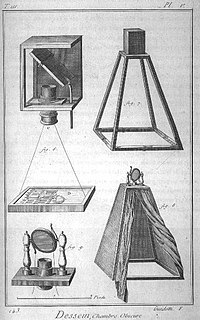Edge detection
The edge detection (English edge detection ), rare edge extraction , is part of a segmentation of elements in the image processing . It tries to separate two-dimensional areas in a digital image from one another if they differ sufficiently in color or gray value , brightness or texture along straight or curved lines . Special edge operators should recognize the transitions between these areas and mark them as edges . At the same time, however, a single, homogeneous area should be recognized as such and should not be divided into two surfaces by a good edge detector.
One of the main difficulties in edge detection, especially with three-dimensional objects, is the distinction between reflection edges that are based on properties of the object and lighting edges that are based on properties of the lighting (e.g. shadows, light cones).
The edge detection is u. a. used in computer vision , photogrammetry and cartography to e.g. B. to detect exact object or terrain edges from aerial photographs .
functionality
An edge detector generally calculates the color value gradient at each individual pixel of an image by examining an area surrounding the point. This process is done by discrete convolution of the image with a convolution matrix , the edge operator . The latter defines the size of the area to be examined and the weighting with which its individual pixels are included in the calculation. The resulting matrix of the gradients at each pixel is - interpreted as an image - called the edge image . The edges between homogeneous areas stand out on it, since there is a comparatively large gradient of the pixel values at these points. The edges appear most clearly in the second derivative (change in the brightness gradient).
The biggest difference between different edge detectors is generally the edge operator used.
Operators
The best known edge operators (also known as edge filters ) are:
- Sobel operator
- Scharr operator
- Laplace filter (see also Laplace operator )
- Prewitt operator
- Roberts operator
- Cherry operator
- Canny algorithm
- Marr-Hildreth operator (also Laplacian of Gaussian (LoG) or Sombrerofilter)
- Contrast enhancer
- Active contour (snake)
- Extreme range filter
Human eye
For humans, edge detection is an essential prerequisite for visual object recognition . His visual system mainly performs this task with the lateral escapement . This enables even the finest line structures to be recognized from a greater distance, such as thin wires or distant paths. However, optical illusions are also possible, for example in some cases in the so-called Martian canals or Mach's stripes .

